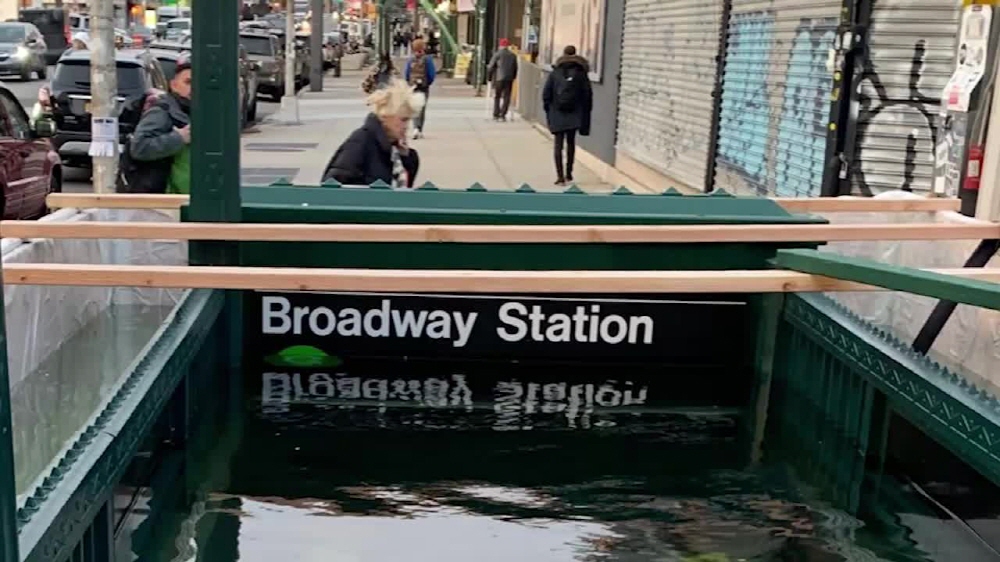
According to the Metropolitan Transportation Authority (MTA) operated by New York State, the artificial flood test is underway. The purpose is to protect the subway from storms caused by climate change.
When Sandy, a major hurricane seven years ago, struck the city, hundreds of millions of liters of water flowed into an underground tunnel, costing billions of dollars. In preparation for such a recurrence of damage, it is said that the gates and doors designed independently were installed and tested over several years.
The New York subway, which developed with the growth of the city, has been transformed into a commuter area where it was previously thought to be too far. In the 30 years since the first subway was opened, the number of users has more than doubled. At the end of the century, there is a risk of total flooding, and unlike Miami, much of the land in New York is located at relatively high elevations. However, if the transportation system is wiped out due to flooding, there is a possibility that it will develop into a big problem because there is no way to move around the city. One of the lessons Sandy learned is that the subway could be a huge sewer. It is pointed out that in New York, we should not forget that more systems are laid underground.
Klaus Jacob, a climate scholar at Columbia University, explains that a few hours ago Sandy, an engineer saved the city from its worst traffic crisis through a signal device. Most of the subway system has been shut down for about a week since, but some lines have had to stop service so far, and damage is being repaired. One of the problems with New York is that there are so many underground entrances with water. The MTA used the National Oceanic and Atmospheric Administration flood map to predict which parts of the city would be flooded at 16 feet high, and identified thousands of locations that could potentially flood underground, including subway entrances, sidewalk grids, and manholes.
Subway entrances can be closed relatively easily using technology designed for space missions. Accordingly, there are currently 21 subway stations with Flex-Gates installed. On the other hand, an unpleasant problem is the ventilation grid designed in the early 20th century. It acts like an exhaust fan that puts fresh air in the tunnel from the differential pressure of the train, and when a storm strikes, it becomes an entrance to wash rainwater underground. According to a 2016 MTA report, there are 5,600 ventilation grids in Lower Manhattan alone, with thousands elsewhere.
In the seventh year after Sandy, the MTA reportedly installed defenses at up to 3.500 flood points. It includes 24 doors weighing 3,000 pounds the same as those used on submarines, 2,300 watertight gates placed under sidewalk grids with inverted vents, and 1,700 portable vent covers.
Previously, an automatic compression gate was installed under a ventilation grid that slammed according to the weight of the incoming water, but it was replaced with a metal manual door. It is said that a glass fiber board with weight was used in places where this could not be applied. Experts say that if these disaster prevention mechanisms work as designed, they will be prepared for Category 2 storms by 2050. However, it is advised that disasters should not be considered perfect as they are always unexpected.
The MTA has installed three temporary walls in the main tunnel to strengthen the system. This is because it is pointed out that a review of securing new spare equipment is necessary to protect the subway even if the gasket fails. It is true that such equipment is expensive and difficult to implement. Another problem is how long it takes for employees to set up these barriers once the storm actually approaches. According to the MTA, the new flood measures are designed to get everything up and running in an hour, including temporary tunnel walls that must be installed manually. However, this presupposes that the staff is already arranged for each element. In practice, the time an employee leaves the site may vary depending on the intensity of the storm.
It’s worth remembering that a few days before Sandy’s landing, Evo wasn’t sure whether the city would be hit by a storm. In the end, how much the MTA’s long efforts will pay off is not known until the actual storm. Nevertheless, investing in new disaster prevention equipment and conducting flood testing is the result of the idea of not wasting Hurricane Sandy’s lessons.
The incidence of large storms increases every year. Given that seven years after Hurricane Sandy, New York took measures over the years and still found problems, these problems are giving us lessons that we need to take action against climate change.


















Add comment